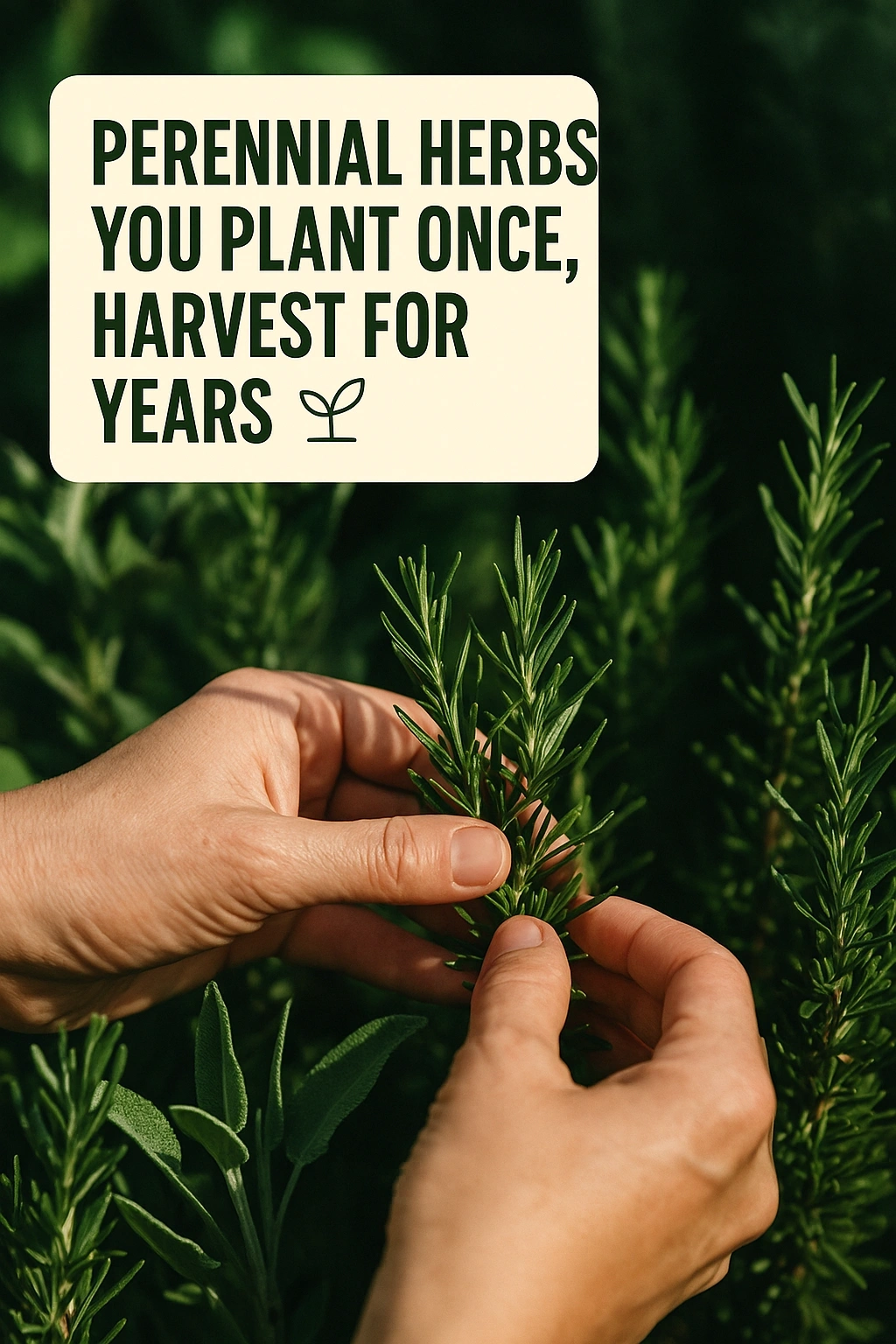
Imagine having a garden that rewards you year after year with fresh flavors and aromatic scents without the need for constant replanting. Perennial herbs offer this delightful experience, making them a must-have for any home gardener. These resilient plants not only enhance your culinary creations but also require minimal maintenance once established. In this article, we will explore some of the best perennial herbs to grow, their benefits, and how to care for them to ensure a bountiful harvest for years to come.
What Are Perennial Herbs?
Perennial herbs are plants that live for more than two years, regrowing each spring from their root systems. Unlike annual herbs, which must be replanted every year, perennials provide a sustainable source of fresh herbs with little effort. This characteristic makes them particularly appealing to gardeners who want to enjoy the fruits of their labor without the need for yearly planting.
Benefits of Growing Perennial Herbs
- Long-Term Harvest: Once established, these herbs can provide fresh leaves for several years.
- Low Maintenance: Perennial herbs require less care compared to annual varieties, saving time and effort.
- Flavorful Addition: They enhance the taste of various dishes and can be used fresh or dried.
- Garden Diversity: Incorporating a variety of herbs can improve soil health and attract beneficial insects.
Top Perennial Herbs to Grow
Here are some of the most popular perennial herbs that can thrive in your garden, providing delicious flavors and aromas for years to come.
1. Thyme
Thyme is a hardy perennial herb that thrives in well-drained soil and full sunlight. It has a strong, earthy flavor that complements a variety of dishes, from meats to vegetables. Once established, thyme can grow for decades with minimal care.
2. Oregano
Oregano is another excellent choice for gardeners. It prefers well-drained soil and can tolerate drier conditions. This herb is widely used in Mediterranean cuisine, making it a staple in many kitchens. Regular harvesting encourages bushier growth and enhances its flavor.
3. Sage
Sage is known for its distinct flavor and aroma, making it ideal for savory dishes. This hardy perennial prefers full sun and well-drained soil. Sage can grow up to three feet tall and produces beautiful purple flowers, attracting pollinators to your garden.
4. Chives
Chives are one of the easiest perennial herbs to grow. They thrive in various soil types and can tolerate partial shade. The mild onion flavor of chives makes them a versatile addition to salads, soups, and dips. Regular cutting encourages new growth and keeps the plant healthy.
5. Mint
Mint is a vigorous grower that can quickly spread in the garden. It prefers moist soil and partial shade but can adapt to various conditions. While it can be invasive, growing mint in containers can help control its spread. Mint is perfect for teas, desserts, and savory dishes.
6. Lemon Balm
Lemon balm is a fragrant herb with a refreshing lemon scent. It thrives in well-drained soil and full sun to partial shade. This herb is often used in teas and desserts and can also be a natural insect repellent. Regular harvesting will keep the plant bushy and productive.
7. Lavender
While primarily known for its aromatic flowers, lavender is also a culinary herb. It prefers full sun and well-drained soil. The unique flavor of lavender can enhance desserts and savory dishes alike. Additionally, its beauty and fragrance attract beneficial pollinators.
Caring for Your Perennial Herbs
To ensure a thriving herb garden, proper care is essential. Here are some tips for maintaining your perennial herbs throughout the growing season.
Watering
Most perennial herbs prefer well-drained soil and do not require excessive watering. Water them deeply but infrequently to encourage deep root growth. Allow the top inch of soil to dry out before watering again.
Fertilizing
Perennial herbs generally do not require heavy fertilization. A light application of organic compost in the spring can provide necessary nutrients. Avoid over-fertilizing, as this can lead to excessive leaf growth and reduced flavor.
Pruning and Harvesting
Regular pruning is vital for keeping your herbs healthy and productive. Harvest leaves frequently to encourage new growth and prevent plants from becoming leggy. Remove any dead or damaged leaves to maintain plant health.
Pest and Disease Management
Most perennial herbs are resistant to pests and diseases. However, keep an eye out for common issues like aphids or powdery mildew. Encourage beneficial insects, like ladybugs, and use organic treatments if necessary. Proper spacing and airflow can help prevent disease.
FAQs About Perennial Herbs
How long do perennial herbs last?
Perennial herbs can last anywhere from three to ten years or more, depending on the species and growing conditions. With proper care, many can thrive for decades.
Can perennial herbs survive winter?
Most perennial herbs are hardy and can survive winter in appropriate climates. Some may die back in colder months but will regrow in spring. Mulching can help protect roots from freezing temperatures.
Do perennial herbs need full sun?
While many perennial herbs thrive in full sun, some can tolerate partial shade. It’s essential to research the specific light requirements for each herb to ensure optimal growth.
How often should I harvest perennial herbs?
Regular harvesting encourages bushier growth and enhances flavor. You can harvest leaves as needed, but it’s best to avoid removing more than one-third of the plant at a time to ensure continued growth.
Can I grow perennial herbs in containers?
Yes, many perennial herbs grow well in containers. This option can be particularly useful for controlling invasive species like mint. Ensure containers have good drainage and provide adequate sunlight.
By incorporating perennial herbs into your garden, you can enjoy a sustainable source of fresh flavors for years to come. With minimal effort and the right care, these herbs will reward you with bountiful harvests, enriching your culinary experiences and enhancing your garden’s beauty.
